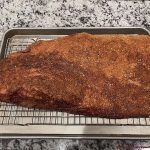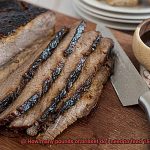Title: The Ultimate Showdown: Oak vs Hickory – Which Wood Reigns Supreme for Smoking?
Contents
Introduction:
Step into the smoky realm of barbecuing, where the age-old debate between oak and hickory has pit meat lovers against each other for generations. These two woods have earned their reputation as flavor-infusing powerhouses, but which one truly takes the crown? Join us on a mouthwatering journey as we explore the merits and drawbacks of using oak versus hickory for smoking. Whether you’re a seasoned pitmaster or a backyard grilling enthusiast, this blog post aims to give you a taste of the distinct characteristics, flavor profiles, and burning properties that make these culinary titans stand out. So grab your aprons, sharpen your tongs, and let’s unravel the secrets behind these wood-fired smoke allies that will elevate your next barbecue to legendary status.
Pros and Cons of Oak for Smoking
Choosing the right wood for smoking can elevate your grilling experience to new heights. Among the many options available, oak wood stands out for its mild and versatile characteristics. In this article, we will delve into the pros and cons of using oak for smoking, equipping you with the knowledge needed to make an informed decision about whether it’s the perfect choice for your grilling needs.
Pros of Oak Wood for Smoking:

Flavor Profile:
Oak wood imparts a mild and versatile flavor to your food, enhancing its natural taste without overpowering it. Whether you’re smoking beef, pork, poultry, or even vegetables and cheeses, oak provides a subtle smokiness that complements a wide range of dishes. Its balanced and restrained flavor makes it a favorite among those who prefer a more delicate smoky taste.
Versatility:
Oak is a jack-of-all-trades when it comes to smoking. Its mild flavor pairs well with different dishes, allowing you to experiment with various flavors and create unique culinary experiences. Whether you’re grilling chicken breasts or smoking a brisket, oak’s versatility makes it a reliable option that won’t disappoint.
Long-lasting Burn:
One of the advantages of oak wood is its slow and even burn. It provides a steady source of heat during the smoking process, making it ideal for long cooking sessions. If you’re planning to smoke large cuts of meat or prepare barbecue that requires extended periods of low and slow cooking, oak is your go-to wood.
Accessibility:
Oak wood is widely available in many regions, making it easily accessible for grillers and smokers alike. You can find it in the form of wood chunks, chips, or pellets at most hardware stores, specialty shops, or online retailers. This availability ensures that you can always have a steady supply of oak wood for your smoking needs.
Cons of Oak Wood for Smoking:
Strong Smell:
While oak adds a desirable flavor to your food, its smoke can sometimes have a strong smell that might not appeal to everyone. The intensity of the aroma can vary depending on the amount of wood used and the type of food being smoked. It’s important to use oak in moderation to avoid an overpowering scent.
Slow to Ignite:
Compared to other types of wood, oak can be slower to ignite. This means you may need to spend a little extra time and effort getting the fire started initially. However, once it’s burning steadily, oak provides a consistent source of heat throughout the smoking process.
Pros and Cons of Hickory for Smoking
Calling all grill enthusiasts. Are you ready to elevate your grilling game? Look no further than hickory wood for smoking. With its robust flavor, versatility, and long-lasting burn, hickory is a favorite among smoky food aficionados. However, before you fire up the grill, let’s explore the pros and cons of using hickory for smoking.
Pros:
Strong Flavor:
- Hickory wood brings a rich and smoky taste to your food, imparting depth and complexity that will leave your taste buds dancing with delight.
- Perfect for pork, beef, and poultry lovers who crave mouthwatering smokiness that takes their dishes to the next level.
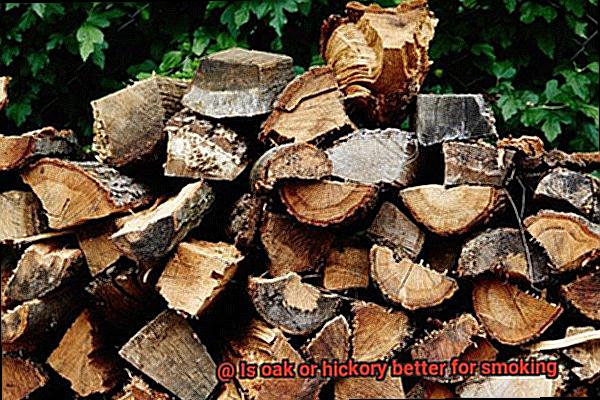
Versatility:
- Not limited to meats alone. Hickory complements vegetables, cheeses, and nuts with its bold flavor profile.
- Unleash your creativity and explore endless culinary possibilities with this robust wood.
Long-Lasting Burn:
- Hickory’s dense hardwood ensures a slow and consistent burn, allowing you to maintain the desired temperature throughout the smoking process without constantly tending to the fire.
- No need to worry about constantly adding more wood chips or chunks – hickory has got you covered.
Widely Available:
- Hickory wood is easily found in many regions, making it accessible to all grillers.
- Whether you prefer chips, chunks, or whole logs, hickory is readily available to satisfy your smoking needs.
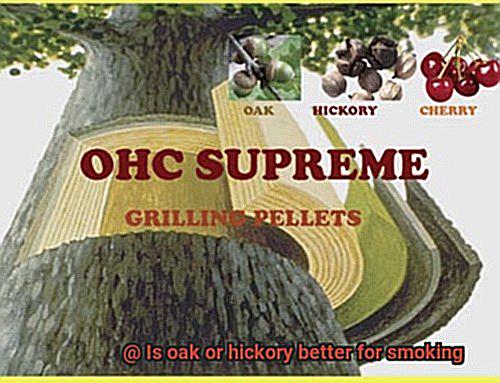
Cons:
Intense Flavor:
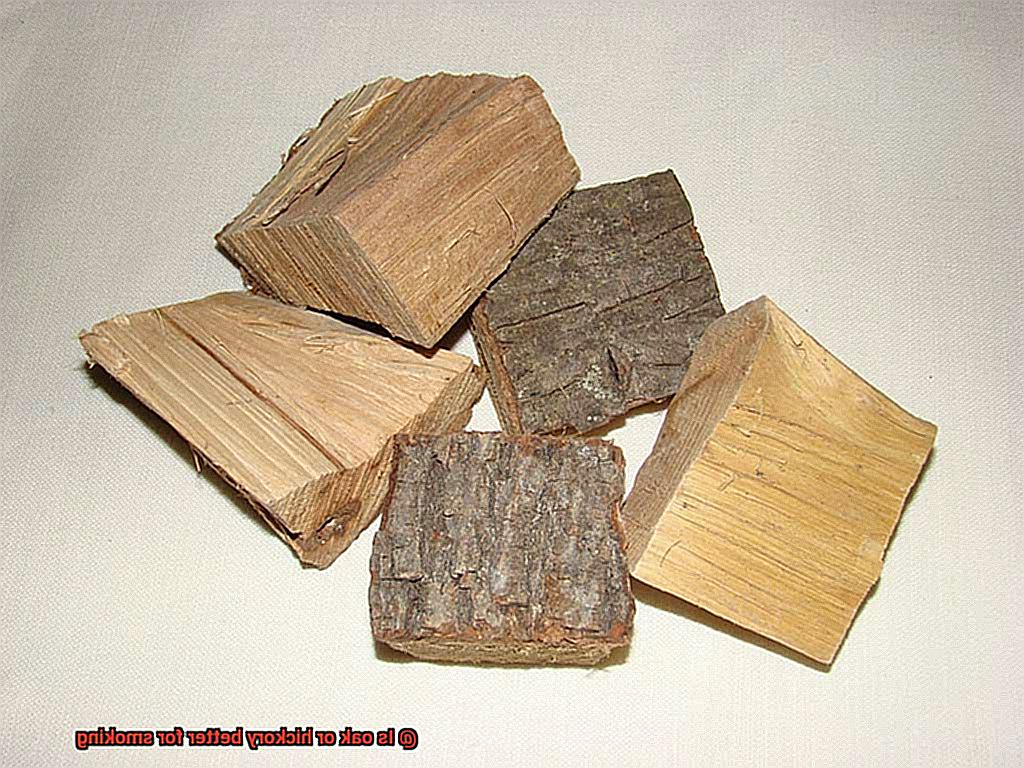
- Hickory’s strong flavor may overpower delicate tastes, making it less suitable for those who prefer milder flavors.
- Consider personal preferences and the dish being smoked before going all-in with hickory.
Potential Bitterness:
- Be cautious of bitterness. Using hickory incorrectly or excessively can result in an unpleasant taste that may leave you disappointed.
- Use it sparingly or combine it with other woods to strike the perfect balance of flavors.
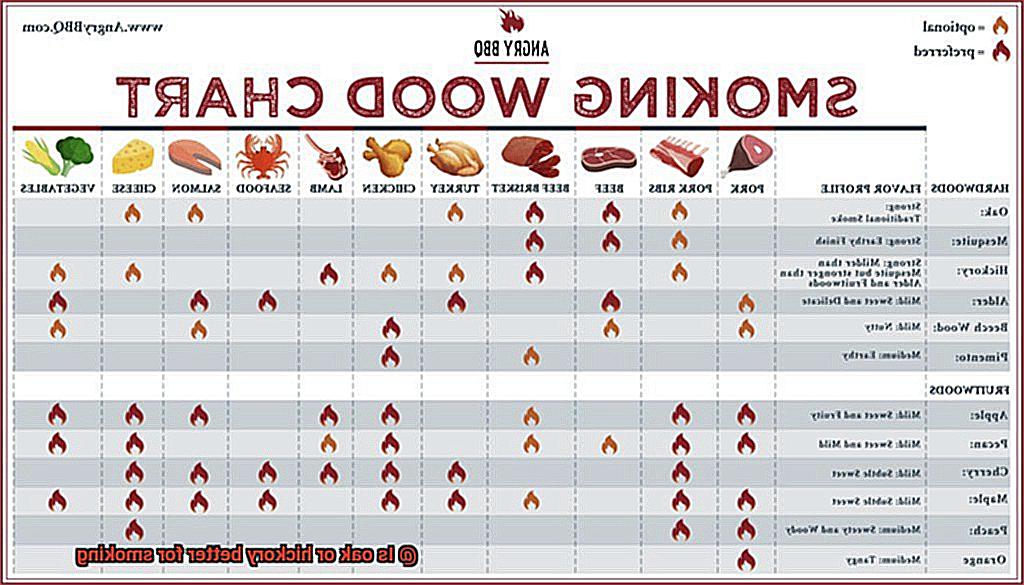
Not Suitable for All Foods:
- Delicate fish and seafood flavors can easily be overwhelmed by the intense hickory smoke, leading to a less enjoyable dining experience.
- Consider alternative woods for these more sensitive ingredients to ensure a harmonious flavor profile.
Longer Aging Period:
- Patience is key. Hickory wood requires a longer aging period compared to some other smoking woods.
- Properly prepare hickory by allowing it to dry out and reach the appropriate moisture content for optimal results.
Considerations When Choosing Between Oak or Hickory
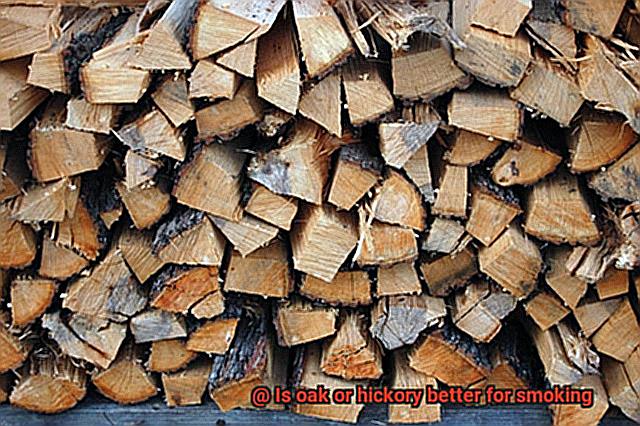
When it comes to choosing the perfect wood for smoking, there are several considerations to keep in mind. Oak and hickory are two popular options, each with its own unique characteristics. By exploring the flavor profile, intensity, food pairings, regional preferences, availability, and personal preference, you can make an informed decision that will elevate your grilling game.
Let’s start with the flavor profile. Oak offers a milder and more subtle flavor, making it a versatile option that pairs well with a variety of meats, poultry, fish, and even vegetables. It allows the natural taste of the food to shine through while adding a delicate smoky touch. On the other hand, hickory delivers a stronger and richer smoky flavor with a hint of sweetness. It’s perfect for robust meats like beef and pork, enhancing their natural flavors with bold smokiness.
Intensity is another factor to consider. Oak produces a medium-level smokiness, providing a balanced and nuanced taste. It adds depth to your dishes without overpowering them. Hickory, on the other hand, brings the intensity to another level. If you’re all about bold and hearty flavors, hickory will satisfy your cravings.
When thinking about food pairings, oak’s mild flavor allows the natural taste of the food to shine through, making it a great choice for a variety of dishes. It complements different meats and even vegetables, adding a subtle smoky touch. Hickory’s strong and distinct flavor is perfect for red meats like beef and pork. It enhances their natural flavors and adds a robust smokiness that complements their richness.
Regional preferences also play a role in choosing between oak and hickory. In Texas, oak is traditionally favored for smoking brisket due to its gentle smokiness that doesn’t overpower the meat’s natural flavor. Meanwhile, hickory is popular in the southern United States, where it adds depth to pork ribs and other hearty meats.
Availability is a practical consideration. Depending on where you live, one type of wood may be more accessible than the other. Ensuring a consistent supply of your chosen wood is important to maintain the desired flavor profile in your smoked dishes.
Last but not least, personal preference matters. Experimenting with both oak and hickory, and trying them on different meats, will help you discover which one aligns best with your taste buds. Whether you prefer the subtle and versatile oak or the bold and robust hickory, considering these factors will ensure that you choose the perfect wood for smoking.
Combining Oak and Hickory for a Balanced Flavor Profile
Get ready to embark on a flavor adventure as we delve into the art of combining oak and hickory wood for a perfectly balanced flavor profile that will have your taste buds dancing with delight.

Let’s start by exploring the individual characteristics of oak and hickory. Oak, like that cool, laid-back friend, adds a subtle smokiness without stealing the show. It’s mild, versatile, and enhances the natural flavors of your meats. Picture juicy steaks and burgers with a touch of richness and a gorgeous reddish hue – that’s what oak brings to the table.
- On the flip side, we have hickory – the bold and bacon-like flavor that packs a punch. Hickory is for those who like to turn up the volume on their grilling game. It’s strong, robust, and adds depth of flavor that is simply irresistible. When you’re smoking pork or poultry, hickory becomes your secret weapon for creating mouthwatering masterpieces.
- But here’s where the magic happens – when you combine oak and hickory, it’s like a flavor explosion in your mouth. The mildness of oak perfectly balances out the boldness of hickory, resulting in a harmonious blend that will make your taste buds sing. Imagine succulent ribs with a subtle sweetness from the oak, beautifully complemented by the rich smokiness of hickory. Are you drooling yet?
Now, let’s talk about how to achieve this perfect balance. There are a few methods you can try. One option is to mix oak and hickory wood chips or chunks together and let them work their magic in your smoker. This will give you a nuanced flavor that combines the best of both worlds. Alternatively, you can start with oak and then finish with hickory during the final stages of smoking. This technique creates a symphony of flavors that develop gradually, with the oak providing a gentle introduction and the hickory adding a grand finale.
Now, here’s the fun part – experimenting with different ratios of oak to hickory. Some grill masters prefer a more pronounced hickory flavor and may opt for a higher proportion of hickory wood. Others prefer a more subtle smokiness and go heavier on the oak. It’s all about finding your sweet spot and creating a flavor profile that suits your palate.
The Role of Proper Smoking Techniques in Achieving Desired Results
Are you ready to take your grilling skills to the next level? Then it’s time to master the art of smoking with oak and hickory woods. While choosing the right wood is important, understanding and utilizing proper smoking techniques can make all the difference in achieving the desired results. So, grab your apron and let’s dive into the world of smoking.
Temperature Control:
When it comes to smoking, maintaining a consistent temperature is crucial. Investing in a high-quality smoker that allows for precise temperature control is a game-changer. Oak and hickory woods have different burning characteristics, so understanding how they influence temperature stability is key. Keep an eye on your thermometer and adjust the airflow as needed to ensure even cooking and optimal smoke infusion.
Smoke Production:
Smoke is the magic ingredient that imparts flavor and aroma to your food. Oak and hickory woods produce distinct smoke flavors, with oak being milder and hickory having a stronger, smokier taste. To achieve the desired smoke intensity, use high-quality wood chips or chunks and experiment with different combinations. Remember, it’s all about finding that perfect balance of flavors.
Wood Selection:
Oak and hickory are popular choices for smoking due to their unique characteristics. Oak offers a subtle sweetness, while hickory brings the boldness of a campfire. The choice between oak or hickory should complement the flavors of the food you’re smoking. For example, oak pairs well with pork and poultry, enhancing their natural flavors, while hickory adds depth to beef and game meats.
Preparing the Food:
Before you fire up the smoker, don’t forget about preparing your food for smoking. Consider brining, marinating, or dry rubbing to enhance flavor and moisture retention. When choosing between oak or hickory, think about the flavors you want to highlight. Oak’s mild sweetness works wonders with delicate fish, while hickory’s robust smokiness elevates the flavors of hearty cuts of meat.
Cooking Time and Techniques:
Cooking time and techniques vary depending on what you’re smoking. Different cuts of meat, vegetables, or other ingredients require specific smoking times and temperatures. Patience is key here, as slow and low is the name of the game. Keep a close eye on your smoker, adjusting cooking times and temperatures as needed to achieve the desired level of doneness.
Tips on Experimenting with Different Wood Combinations
One way to add depth and complexity to your smoked dishes is by experimenting with different wood combinations. From the mild and versatile flavors of oak to the bold smokiness of hickory, each type of wood offers a unique taste that can elevate your grilling game. In this blog post, we’ll explore some tips and considerations to keep in mind when venturing into the world of wood combinations for smoking.
Start with the Basics:
Before diving into the world of wood combinations, it’s important to understand the individual flavor profiles of each type of wood. Oak, known for its versatility, offers a mild and slightly sweet flavor that pairs well with a variety of meats. On the other hand, hickory provides a stronger and more robust taste that works particularly well with red meats like beef and pork.
Mix and Match:
One of the best ways to experiment with different wood combinations is by mixing them together. By blending oak and hickory, for example, you can create a unique blend of flavors that adds depth to your smoked dishes. Try different ratios to find the perfect balance that suits your taste preferences.
Consider the Intensity:
When experimenting with wood combinations, it’s important to consider the intensity of each wood’s flavor. Some woods, like mesquite, have a strong and distinct taste that can overpower other flavors. By pairing a strong wood like mesquite with a milder wood like oak or fruitwood, you can achieve a more balanced and nuanced flavor.
Think About the Meat:
Different types of meat can benefit from different wood combinations. Poultry tends to pair well with fruitwoods like apple or cherry, which impart a subtle sweetness to the meat. Red meats like beef or lamb can handle stronger woods like hickory or oak. Consider the characteristics of the meat you’re smoking when experimenting with different wood combinations.
Don’t Be Afraid to Try New Things:
The beauty of experimenting is that there are no hard and fast rules. Feel free to try out unconventional wood combinations and see what works for you. You might stumble upon a unique blend that becomes your signature flavor. Keep notes of your experiments so you can replicate successful combinations in the future.
e_ihPPARY9A” >
Conclusion
In conclusion, the debate between oak and hickory for smoking boils down to personal preference and the flavor profile you crave. Oak, with its mild and versatile essence, delicately enhances the natural taste of your food without overpowering it. It’s a fantastic choice for those who yearn for a more subtle smoky touch and love to experiment with different flavors. On the flip side, hickory unleashes a bold and robust smokiness that adds depth and complexity to dishes, especially when it comes to hearty red meats like beef and pork.
When making your decision between oak and hickory, take into account factors such as flavor intensity, food pairings, regional preferences, availability, and of course, your own taste buds’ desires. Oak is widely accessible and pairs beautifully with an array of meats, poultry, fish, veggies – even cheeses. Meanwhile, hickory reigns supreme in the southern United States where its audacious flavor perfectly complements hearty cuts of meat.
For those seeking balance in their flavor profiles, why not combine oak and hickory? This dynamic duo creates a harmonious blend that caters to both subtle and bold taste preferences. By experimenting with different wood combinations, you can customize your grilling experience and unlock unique flavors that will elevate your dishes to new heights.
Remember to master proper smoking techniques: control temperature like a pro; produce smoke with finesse; choose wood wisely; prep your food beforehand; employ cooking time-tested techniques. And above all else – don’t be afraid to step out of your comfort zone. The world of wood combinations for smoking is vast and brimming with untapped possibilities just waiting to be explored.





